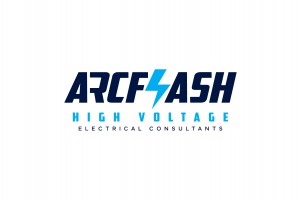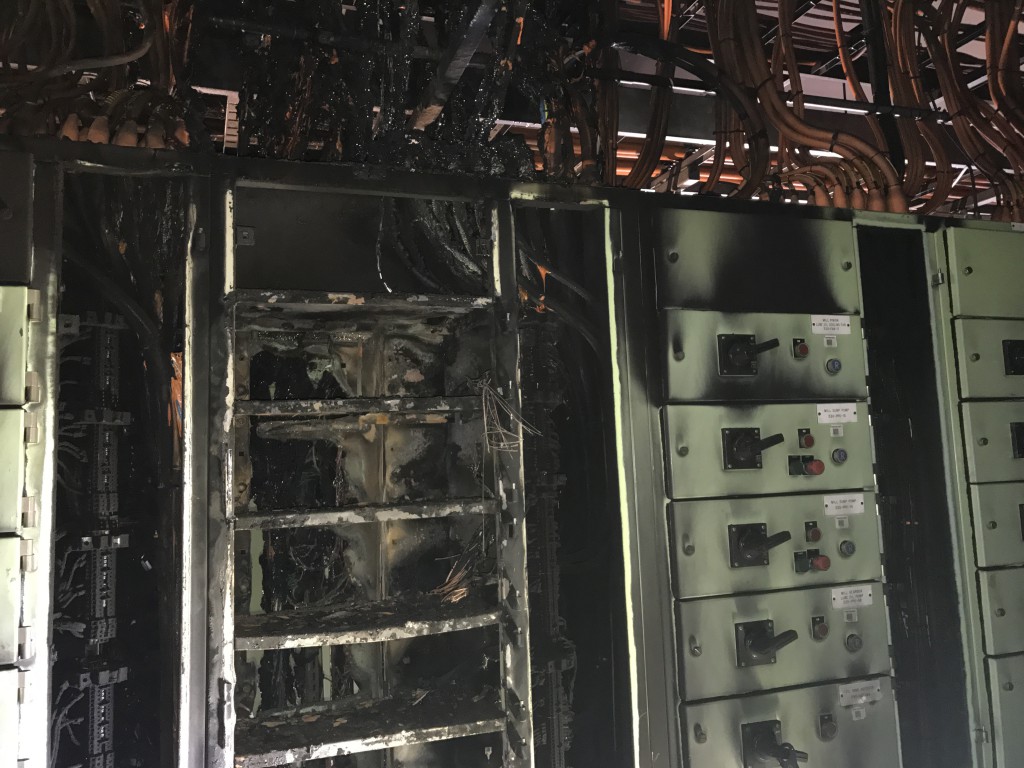

Welcome to Arcflash Electrical Consultants
Electrical Engineers and High Voltage Consultants with over 20 years experience in Design, Construction, Commissioning, Investigation (Concept, Failure and Insurance) and Process Optimisation.
Industries Serviced include:
Oil/Gas
Mining
Petrochemical
Heavy Industry
We have experience in High Voltage, Low Voltage, Instrumentation, Rotating Machines, non-PLC/DCS Control Systems, Process Optimisation and Project Management.
Our Speciality is Arc Flash and Fault Current Analysis and Mitigation, Commissioning of High Voltage Assets and Lightning Protection.
We have completed Arcflash Hazard Assessments for clients in Australia and Internationally, and are ready to work anywhere – no Inspection is too large or small – we can do it all.
Key Services Offered :
- Arc Flash Assessment
- Arcflash Mitigation
- Fault Current Analysis
- Electrical Incident Investigations (Equipment Failure)
- Expert Witness – Investigation and Reporting
- High Voltage (HV) Design Review and Verification
- Low Voltage (LV) Design Review and Verification
- Commissioning/Re-Commissioning
- Emergency Power Systems Verification
- Earthing Verification
- Concept Designs and Investigations
- Review and Verification of Compliance
- Review of Critical Documentation
- Review of Protection Schemes
- Review of Process and Flow
- Verification of Process Capabilities
- Verification of Protection Schemes
- Installation Compliance Verification
- Installation/Plant Inspection
- Lead Advisor/Subject Matter Expert
Power & Energy
Traditional and Renewable Power Generation, Emergency and Back-Up Systems, Commissioning and Operations advise for all Installations
Construction & Building
Project and Site Engineering, Walkdown/Punchlist Verification and Commissioning in Greenfields and Brownfields Projects
Industrial
Design, Site, Commissioning and Reliability Engineering for Greenfields and Brownfields operations
Oil & Gas & Mining
Construction, Commissioning and Operations, Reliability and General Engineering in all Underground, Offshore and Onshore Installations
What is Arc Flash?
Arc Flash is when Electricity (Arc) jumps (Flash) from a higher potential (Phase Conductor) to a lower potential (Other Phase Conductor or Ground). When the Arc Flash happens, there is a large release of energy – mostly thermal. The energy release is calculated using Fault Current and time, however the Energy Absorbed also uses a distance. This is measured in Cal/cm2.
Normally an Arc Flash will happen when switching a Main Switch, Circuit Breaker or Switch-fuse; however this can also happen when wasps make a nest on Transformer Bushings or a possum jumps over a HV insulator causing a short circuit.
Why does Arc Flash need to be considered?
Arc Flash needs to be considered on all electrical installations as even low voltages can cause serious Arc Flash damage and burns. On a typical domestic switchboard, typically there is 5kA fault current, and if the Main Switch fails (or Arc Flashes) when operating without gloves, this can cause 2nd degree (or greater) burns to the hand.
With an opening (or Flash) Time of 0.1 sec for the Service Fuse to blow, and a distance of 50mm from the Arc, this gives an Energy Release of 162J/cm2 or 38.7 cal/cm2.
On commercial or larger installations, fault current is higher however the Main Incomer Circuit Breakers are able to be operated from a further distance. Even so, if the Fault Current is calculated at 10kA or more or the installation is operating at High Voltage (over 1kV); an Arc Flash Analysis is recommended to be conducted to ensure that PPE with appropriate energy absorption rating is used for Electrical Operators when operating Electrical Infrastructure online.
Other items that need to be considered with Arc Flash is:
– The amount of thermal energy released with an Arc Flash can cause fire, smoke and melt copper. The molten copper can be atomised and spread out in the vicinity of the Arc Flash due to the pressure wave. This can cause fires and contamination faults on electrical apparatus if not cleaned properly.
– The pressure wave from the Arc Flash can cause concussion if the operator is within the Arc Flash Boundary.
– Arc Flashes on Transformers can rupture transformer tanks and ignite transformer oil.
How do I reduce Arc Flash in my installation?
There are various ways to reduce the Arc Flash Hazard to personnel and plant. These include:
Arc Flash Isolation from Personnel – Use Remote Switching from location external to Switchroom.
This removes the Arc Flash hazard from the Electrical Operators as they will be outside the Arc Flash Boundary.
Arc Flash Isolation from Plant – Use Arc Fault Rated Apparatus.
This will contain the Arc Flash and Energy in the Switchboard/MCC.
Reduction in Arc Flash – Install High Rupture Capacity (HRC) Fuses upstream of the Electrical Apparatus.
HRC Fuses are provide almost instantaneous protection on High Fault Currents. This will lower the Arc Flash time and therefore Arc Flash Energy.
Arc Flash PPE – Ensure the Electrical Operators wear PPE that is rated to the Arc Flash Energy hazard as determined by the Arc Flash Analysis.
This will reduce the thermal energy absorbed by the skin.
A complete Arc Flash Analysis and Site Inspection will determine the best way to reduce the Arc Flash Hazard on your installation – Call us for assistance.
What is High Voltage?
Electricity is classified as High Voltage when it exceeds 1,000 Volts AC or 1,500 Volts DC. There are specific safety, design and operating requirements and procedures for all apparatus and conductors that carry High Voltage. One of the main Australian Standards that is used with High Voltage is AS 2067 – Substations and High Voltage Installations. This describes the minimum design and operating requirements required for an installation to operate safely.
Other Standards may be used dependant on the industry, although AS 3000 and AS 3008 are required for all electrical installations (i.e. AS 3007 and AS 4871 series for Mines and Quarries; AS 60204 series for HV Equipment; AS 60079 for Hazardous Areas including Oil/Gas Installations).
Why is High Voltage used?
High Voltage is normally used where a load of over 200kVA is required. At Low Voltage (415V), 200VA is approx 280A; where at 6.6kV, it is approx 18A. This allows for cost saving on cable, apparatus size and overall power inefficiency as the current is lower. An example is the cable size for a 6.6/0.415kV, 200kVA Transformer – High Voltage side can operate at 2.5mm2 cable (although 16mm2 is normally the smallest available 6.6kV Cable), where the Low Voltage side cable requires a minimum of 120mm2.
Electricity Distributors typically operate the HV feeders at 11kV and 22kV; dropping down to 415V closer to the consumer (residential, commercial and small industrial sites).
Power Generators and motors larger than 1MW are nominally HV, as the size and cost of LV Generators and motors (and associated apparatus) over 1MW can be prohibitive.
Reducing the High Voltage Risks in the Plant
High Voltage can be used as safely as Low Voltage as long as the hazards are recognised and understood. This includes
– Ensuring Electrical Operators sufficiently trained as High Voltage Operators
– Electrical Operators using approved Switching Procedures
– Restriction of access to HV Installations (Switchrooms, Transformers, etc) to authorised personnel
– Maintenance Plans that are reviewed regularly
– Regular Protection Testing of HV Protection Relays
– Ensure Critical Documents are correct (Single Line Diagrams, Fault Current Report, Protection Study, Arc Flash Analysis)
– Reviewing and verifying electrical design (Concept Design, Detailed Design and existing Installations).
For assistance in any of the above, please call on 0417 334 936.
What is Fault Current?
Fault current is the current that flows through a short circuit fault, either from a Phase to Phase or Phase to Earth fault. Normally it is 2 – 3 orders of magnitude greater than the normal current flow in a circuit. This is because a short circuit may have only milli-ohm or micro-ohm resistance.
Using Ohm’s Law (AC = V=IZ; DC = V=IR) on a 25 Ohm load operating at 250V, the current is 10A; where in a fault scenario, with a resistance of 0.001 Ohm, the fault current will rise to 250kA on an infinite bus.
This is however unrealistic, as on low voltage installations the transformer impedance, cable resistance and transformer let-through current will limit the fault current to normally below 25kA. High Voltage installations may be as high as 100kA, especially close to large (250MVA+) step-down transformers with low impedance.
Why do I have to consider Fault Current?
Fault Current is required to be considered from design through to de-commissioning of an installation. By knowing the Fault Current, the “Hard Protection” can be designed for Switchboards, Switchgear, Transformers, Cable and other apparatus. “Hard Protection” is the rating of the equipment is shown in “xx kA/y sec” – it allows the components to carry the fault current (up to ‘xx kA’) for a short period of time (up to ‘y sec’) until the Circuit Breaker or Fuse opens the circuit and disrupts the flow of current.
Large amounts of heat are generated when there is a fault current, and if this happens over an extended period of time (greater than the “Hard Protection” of the equipment) the equipment may fail and Arc Flashes may be generated.

Above is a LV (440V) Switchboard that sustained a 15kA fault for 180 seconds, until the Protection on the HV side of the feeding Transformer tripped. Unfortunately the LV Incomer Circuit Breaker protection failed at some time before the fault, and there was no documentation to show when the protection had been previously tested.
The estimated energy released was 2700 MJ over that time. The fault started in the bottom section of the tier, arcing between the phases and earth; and progressively vaporised the busbars and Switchboard Chassis.
Other items that need to be considered with Fault Current is:
– Arc Flash that can be generated – higher Fault Current = higher Arc Flash
– Lowering Fault Current in an installation is not always possible, however regular Protection Testing of Protection Relays will assist in ensuring any fault that may occur will be detected immediately.
– All electrical apparatus is required to be inspected and maintained regularly to ensure that it is up to standard
What do I need to know about Fault Current?
By having a Fault Current Analysis completed on the installation, this will assist in many ways including:
Assisting Protection Settings for your Protection Relays
Fault Current Analysis will enable Instantaneous Trip Point settings to be adjusted to allow for discrimination where required.
Assisting with Design for future projects
By knowing the Fault Current in various sections of plant, future designs can be completed in confidence. Where new transformers are able to be installed, a higher impedance transformer will lower the secondary fault current, enabling possible changes to “Hard Protection” of apparatus.
Assisting with Arc Flash Assesment
Arc Flash Assessments require a Fault Current Analysis , so that the prospective Arc Flash Rating can be determined (Fault Current, Time and Distance from Arc are all used in determining the Arc Flash Rating)
Providing ideas of where to install High Rupture Capacity (HRC) Fuses to provide supplementary protection
Installation of HRC Fuses will provide supplementary protection in your plant. The size of the Fuses (Continuous Current Rating vs Fault Current Rating/time) will change dependant on the location in your facility.
For any assistance or questions on Fault Current, please contact Nate on 0417 334 936


